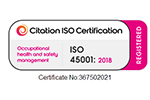
Simple energy saving tips for businesses
Like most UK businesses, energy saving is probably high on your agenda. Not only will it help you claw back on spending (a huge plus in today’s economic climate), but it’ll help hit those all -important carbon reduction targets. Thankfully, there are simple steps you can take to make and retain energy savings – all while improving the efficiency of your heating, ventilation and air conditioning (HVAC). And the best part? You won’t need to spend a lot of money – if anything at all – to enact these changes.
Here’s some top energy saving tips to improve the efficiency of your Building Energy Management System (BEMS) – controlling up to 60% of your entire building’s energy consumption.
Energy Saving Tip 1. Only purchase green energy AFTER you’ve become energy efficient
Don’t go down the green energy route before you’re ready. While purchasing green energy is great for business, it doesn’t address your energy efficiency issues.
On average, 30% of a building’s energy is wasted. That’s why it makes good environmental and business sense to identify and address any performance gaps (making your building as energy efficient as it can be) before you purchase green certificates. If you skip this step, you’ll end up spending money on green energy that will ultimately go to waste.
Energy Saving Tip 2. Optimise your BEMS
The best way to reduce your energy consumption is to optimise your BEMS and implement energy conservation measures. Most BEMS optimisation changes only require the implementation time of a BEMS specialist and the benefits are immediate. You’ll typically see a payback period of less than six months – one of the fastest returns on investments (ROIs) in the commercial sector.
Total energy spend
Around 40% of a commercial building’s energy spend is consumed by HVAC and 20-25% of this could be saved with free or low-cost energy efficiency measures. This equates to between 8-10% of the total energy spend – a significant amount, especially in today’s volatile market.
Performance gaps
If you want to optimise your BEMS, start by identifying ‘performance gaps’ in your building services. You can do this by asking your BEMS specialist to check systems are up-to-date and not using energy unnecessarily. They can:
- Check whether your building maintains optimum conditions automatically by reviewing system settings and putting them in AUTO control.
- Review operational time schedules to make sure your building’s occupancy patterns are correct – if any of your systems are on while nobody is in, this can be adjusted.
- Check and review comfort temperature setpoints to ensure they’re realistically set and don’t cause conflict between the heating and cooling systems.
- Ensure that ‘optimised’ start and stop is used where possible to ensure the building is comfortable during occupied hours.
- Check whether the comfort temperature setpoints are compensated against outside air temperature, while referencing the internal space temperatures. Why? Because it is beneficial to adjust the comfort setpoint temperatures depending on the ambient conditions. After all, with the outside temperatures close to freezing, an internal comfort setpoint of 21ºC would be fine. As the outside temperature increases to 10ºC, for example, the internal comfort setpoint could be reduced as the heating demand is reduced.
Energy Saving Tip 3. Link BEMS to other services
What other equipment can be optimised and linked to your BEMS? The more electrical and mechanical items that are integrated the better – it’ll provide greater visibility of your building’s operation and give you more control over your energy usage.
Your building’s lighting systems, for example, could be interfaced into your BEMS, as well as your building’s cooling plant. It’s a relatively straightforward process for your BEMS specialist and should result in a return on investment (ROI).
Energy Saving Tip 4. What’s the data saying?
Metering can be a powerful energy-saving resource, but only if you choose to do something with the information gleaned.
Save energy (and money) by collating and analysing your building’s utilities data from main and sub meters. This will identify trends, exceptions and abnormalities from your building’s energy dashboard displays, giving you a greater insight into overall energy consumption.
Metering is particularly advantageous when energy intensive items of plant are sub metered (e.g. chilled water plant, air handling units, motor control panels). If you fit sub meters to these ‘significant energy users’ (SEU), it’s possible to have a clear representation of load-specific consumption patterns and performance. Information extracted from the data will allow better informed decision-making.
Following any BEMS optimisation changes, you can easily identify and qualify energy savings by looking at measurable differences in meter consumption data. Speak with your BEMS specialist about the SEUs in your building and discuss how equipment should be sub metered – if it’s not already – and how this consumption data can be visualised.
Final Thoughts
We’ve outlined how to improve the efficiency and performance of HVAC and respective control systems in your building without breaking the bank.
This simple yet effective approach to energy management will reduce energy consumption through BEMS optimisation, analytics (including advanced analytics from our PROActiv Energy solution) and by paying close attention to all aspects of HVAC usage.
Contact Kendra
If you have any questions about how to reduce your energy use and scale back on energy spending, speak to one of our experts via your local office.









